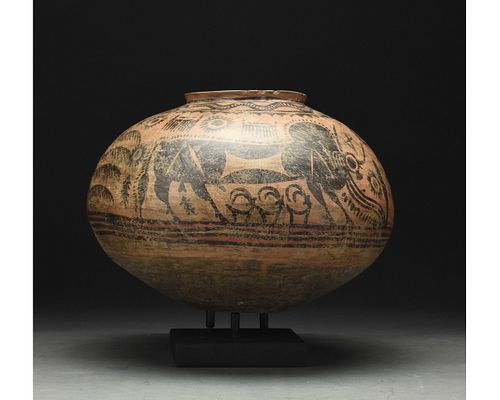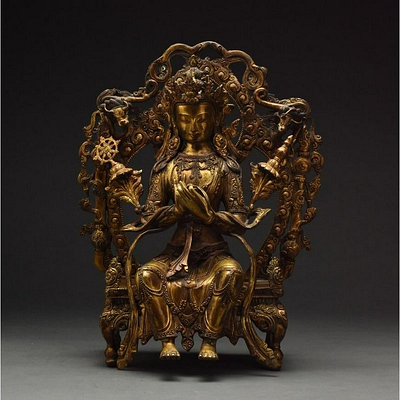INDUS VALLEY PAINTED VESSEL
Lot 5
Categories
Estimate:
GBP£100 - GBP£200
$128.21 - $256.41
Absentee vs Live bid
Two ways to bid:
- Leave a max absentee bid and the platform will bid on your behalf up to your maximum bid during the live auction.
- Bid live during the auction and your bids will be submitted real-time to the auctioneer.
Bid Increments
| Price | Bid Increment |
|---|---|
| GBP£0 | GBP£1 |
| GBP£10 | GBP£5 |
| GBP£100 | GBP£10 |
| GBP£200 | GBP£20 |
| GBP£500 | GBP£50 |
About Auction
By Apollo Art Auctions
Jul 26, 2020
Set Reminder
2020-07-26 08:00:00
2020-07-26 08:00:00
America/New_York
Bidsquare
Bidsquare : ART OF ASIA- FROM ANTIQUITY TO PRESENT DAY
https://www.bidsquare.com/auctions/apollo-art-auctions/art-of-asia--from-antiquity-to-present-day-5317
We are members of the BNTA (British Numismatic Trading Association) and the ALR (Art Loss Register). WE ACCEPT DIRECT PAYMENTS IN ALL MAJOR CURRENCIES: BIDDERS CAN PAY IN USD, GBP AND EUR. NO RESERVE SALE IN-HOUSE PACKING AND WORLDWIDE SHIPPING FOR ALL LOTS. Apollo Art Auctions enquiries@apolloauctions.com
We are members of the BNTA (British Numismatic Trading Association) and the ALR (Art Loss Register). WE ACCEPT DIRECT PAYMENTS IN ALL MAJOR CURRENCIES: BIDDERS CAN PAY IN USD, GBP AND EUR. NO RESERVE SALE IN-HOUSE PACKING AND WORLDWIDE SHIPPING FOR ALL LOTS. Apollo Art Auctions enquiries@apolloauctions.com
- Lot Description
C. 3rd millennium BC. Ancient Central Asia, Indus Valley. A fine example of an polychrome Indus Valley civilisation jar, comprising globular body and a small, slightly flared rim. The ochre coloured vessel is decorated with black motifs of two humped bulls, with long, curving horns, shown in profile. The bulls are separated vegetal motifs and framed by a series of geometric designs. The outermost limits of the vessel’s decorative scheme are delineated by black and red stripes and the bottom most portion of the jar is painted black. The Indus Valley Civilisation was an important Bronze Age culture which arose in c. 3300 BC and lasted until c. 1300, though its heyday, to which this ceramic vessel belongs, was in the 3rd millennium BC. The bull, with its hump and powerful horns, is a recurring motif in the Indus Valley, appearing on painted pottery like this example but also on figurines and stamps. The animal may represent the leader of a herd, who is able to protect his followers, or it could be a reflection of the bull’s importance in religious sacrifice. Cf. N. Satyawadi, 1994. Proto-Historic Pottery of the Indus Valley Civilisation: Study of Painted Motifs, New Delhi. Superb condition. Provenance: Property of a West London gentleman; previously in a collection formed on the UK/International art market in the 1970s. Size: H:190mm / W:260mm ; 1559g
- Shipping Info
-
We offer in-house packing and international shipping at discounted rates.
-
- Buyer's Premium



 EUR
EUR CAD
CAD AUD
AUD GBP
GBP MXN
MXN HKD
HKD CNY
CNY MYR
MYR SEK
SEK SGD
SGD CHF
CHF THB
THB














